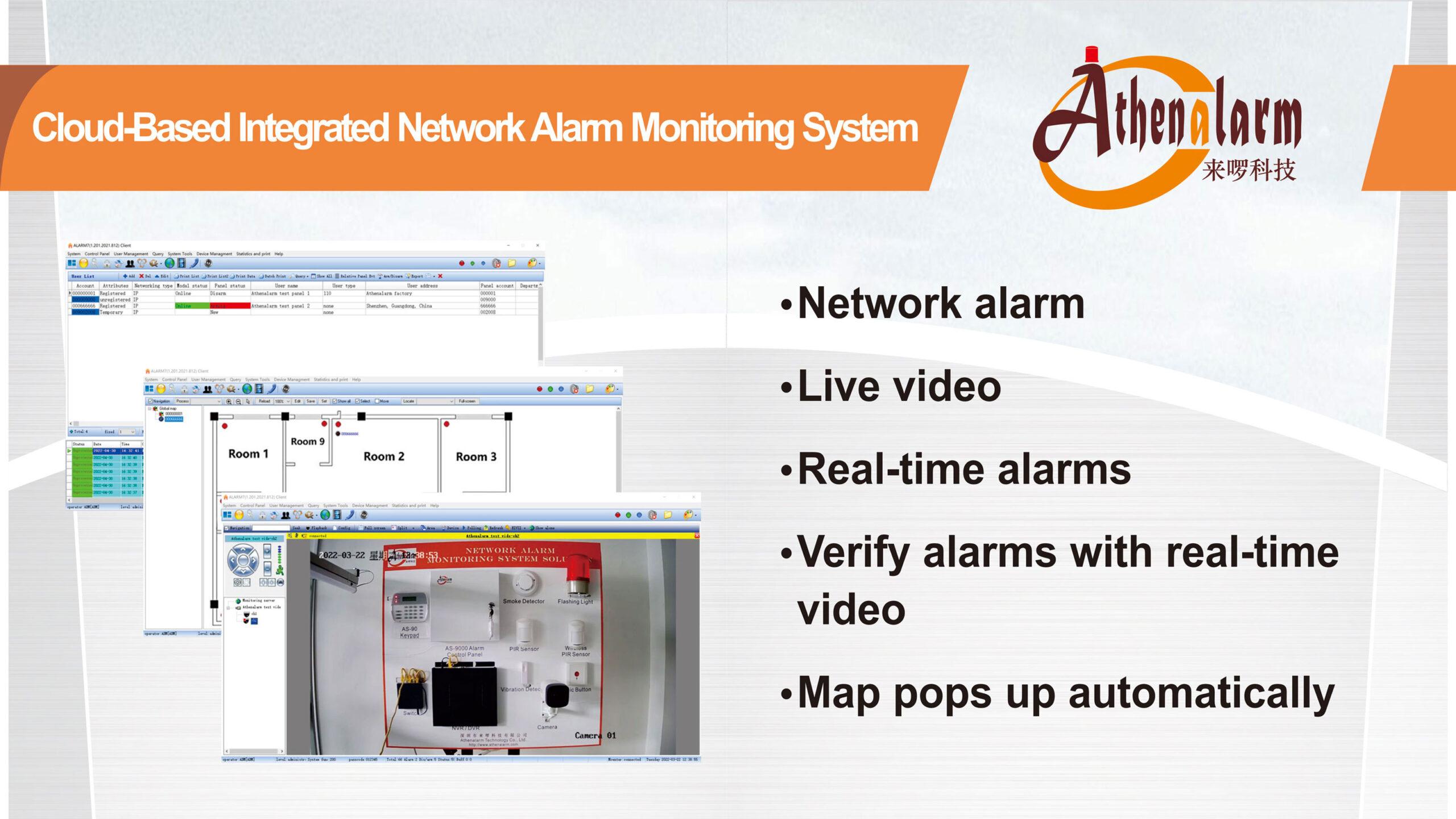



Motion Sensor Selection Key Points
The motion sensor selection should not only consider the product specifications and manufacturer’s technical guidelines, but also take into account factors such as terrain, correlation between targets and the environment, equipment concealment, construction integration, and whether it harms the human body for comprehensive consideration. Only by understanding the application background such as the actual usage environment and protection needs, and conducting a comprehensive evaluation of outdoor detectors, can we more accurately and objectively select the truly suitable motion sensors. What are the key points for motion sensor selection? Please read this article.
1 Basic application principles of motion sensor selection
The accuracy of the operation of motion sensors is an important basis for evaluating the reliability and effectiveness of burglar alarm system. After understanding the necessity of motion sensor selection, it is equally important to know the basic application principles of motion sensor selection, which are as follows:
(1) There must be a non correlation consideration between the detection target and the environment: In practical environments, there are many targets that may trigger alarms or generate false alarms. For example, harmless small animals such as insects, birds, cats, dogs, vehicles in adjacent lanes, pedestrians passing by, plant branches and leaves swaying in the wind, high and low voltage electrical pipelines or wireless wave transmission equipment and lighting fixtures. Therefore, any motion sensor should not be affected by these targets. If this principle is ignored in application, it may lead to constantly troubling false alarms.
(2) The setting environment of motion sensors should have a certain blocking ability: In order to achieve a certain protective effect, especially for outdoor point-to-point active motion sensors, there should be a certain height or width in the installation environment, and the target should not jump or even step over. This application principle is basic and necessary.
(3) The installation of motion sensors must be seamless and invisible: The installation of motion sensors is important for their effectiveness. Therefore, in order to give full play to the advantages of seamless and invisible detection, the installation of equipment must be concealed or the target must not feel detected. Therefore, it is necessary to carefully match the appearance with the environmental landscape to avoid unnecessary misunderstandings or make the target wary.
(4) The installation and application of motion sensors should consider terrain factors: When installing motion sensors, they will encounter the influence of terrain in the usage environment. Therefore, it is necessary to pay attention to the differences in slope height, stair height, height of two buildings, or the different terrains crossing ditches and culverts, which will affect the selection of applications, so as not to have protective loopholes.
(5) Motion sensors must be convenient for system integration and construction: Motion sensors are usually not the entire burglar alarm system, and are generally used in conjunction with burglar alarm system, access system or video monitoring systems. Especially, the monitoring image linkage signal must be synchronous and real-time. Therefore, in the design and construction of signal linkage and connection parts, it must be very convenient for the engineering company’s system integration and construction. Therefore, the interface structure of the motion sensor must not only be suitable for various weather environments, but its signal format must also be easy to connect with various control devices.
(6) Motion sensors should be harmless to the human eye: In the application of optical beams, motion sensors should first consider being harmless to the human eye, which is an important consideration for the application of intrusion detectors. At present, for active detectors in the market, a laser beam called a laser detector may cause harm to the human eye. Even under normal active microwave detector irradiation, it may cause certain harm to the human body. Therefore, in the principle of application, it is necessary to avoid beams that may cause any harm to the human body.
(7) Motion sensors must have multiple detection application functions: Due to differences in environmental and target intrusion methods, the functionality and countermeasures of motion sensors must be diversified. Therefore, multi detection methods are also a principle that must be paid attention to in detector applications.
(8) The selection of motion sensors must be timely response: as motion sensors are mostly located in remote intrusion prevention areas, real-time alarm response is absolutely necessary. From alarm to confirmation, it is generally required to confirm the real-time status of the site within a few seconds as a basis for processing, so real-time performance is also an important application principle of motion sensors. Usually, the sensing speed of the motion sensor is within a few milliseconds, and the detection signal can be transmitted from the detection end to the alarm control panel, which is already a very fast transmission speed. However, due to the lack of an intuitive graphical interface, it can cause delays in human eye judgment, so the real-time performance of motion sensors is a crucial application for products.
(9) The more beams there are, the better the blocking ability: Active motion sensors are usually mainly used with dual beam active motion sensors. In terms of ergonomics, the detection area of the human body is approximately 50-70cm in width on the front and 20-40cm in width on the side. If a single or dual beam active motion sensor is used in a wide environment, it may fail to block one of the upper or lower beams of the motion sensor, resulting in an alarm or false alarm. Of course, using four or more beam motion sensors will reduce the probability of such false alarms.
The above are the basic application principles of motion sensor selection, which are precautions to be taken when applying products.
Motion sensors can be further subdivided into glass doors and windows, fences, electric rolling doors, and perimeter fences or fences based on different applications and equipment themselves. It can also be divided into three types based on the beam concentration conditions: three-dimensional vertebrae and single beam, dual beam, four beam or more beam modes, etc. These different distinguishing factors may all lead to errors in the effectiveness of equipment installation, namely errors in application selection, which may result in continuous false alarms and missed alarms.
2 Material structure and circuit design of motion sensor selection
(1) The influence of the material and structure of the product itself. The structural material of the product must be able to resist strong winds and various harsh weather erosion. The dark colored shell must be able to withstand the range of environmental temperature changes and be sturdy and impact resistant. A downward viewing angle structure that can adhere to the wall is required to meet the detection angle requirements, and the structure should also be able to adapt to installation conditions with a height of 0.8-4m. The internal spherical lens structure should be able to achieve 360 ° complete coverage, so as to be considered a qualified structural standard.
(2) In circuit design, it is best to use VLSI chips with high-speed spectrum analysis as sensing components to increase operational sensitivity. It has a bidirectional temperature compensation function to increase the accuracy of target detection by ambient temperature. It can have a unique dual component (dual source low noise thermal sensor PYRO) detection function, which can effectively prevent false alarms. A circuit design that can resist RFI EMI radio frequency interference and has counting and alarm functions.
(3) It is best to use a planar microwave radar sensor to increase stability. According to different environments, the sensing intensity can be adjusted according to the size of the detection sensing area. Of course, there is also a lightning protection circuit design, which is resistant to fluorescence and strong light interference. The detection surface can use multi directional and all-round induction detection to ensure no dead corners. It is important to have identification lines for the movement signals of small animals and other MSD objects to ensure stability and no false alarms.
3 Installation and construction methods of motion sensor selection
There are some installation specifications for motion sensors. For example, when a target invades, regardless of whether the person has passed horizontally or sideways, even if they crawl forward, the invasion distance must exceed 20cm. Therefore, as long as the installation height of the first beam above the ground is not higher than 20cm, it should be able to prevent intrusion. When encountering a curved wall corner, the distance between the tangent line and the arc should not exceed 20cm to prevent the human body from flashing sideways. For example, when installed on a penetrating fence, the distance between the edge of the fence and the center of the sensor should not exceed 20cm to prevent it from crouching down from the bottom and entering. In order to avoid affecting the sensitivity of the sensor and the effectiveness of preventing small animals indoors, as well as due to the strong infrared radiation on the human face, knees, and arms, the installation height of wall mounted motion sensors is approximately 160-220cm. For active motion sensors, engineers will require their installation brackets to be stable and firm, without any shaking phenomenon. If there is shaking, a slight deviation may cause the sensor to fail. Meanwhile, it is common knowledge that there should be no obstructed branches or weeds within the detection range to avoid causing too many false alarms.
Human body temperature is generally around 37℃, and the human body will naturally emit infrared rays of a specific wavelength of about 10-12µm. PIR motion sensors rely on detecting infrared rays of about 10-12µm emitted by the human body to sense and alarm. In the motion sensor selection, it must be noted that the pyroelectric components must be very sensitive to the sensing of infrared radiation with a wavelength of about 10-12µm, but the temperature interference in the environment must be controlled and suppressed on the filter on the sensor to avoid false alarms. Because PIR motion sensors are susceptible to interference from various heat sources and sunlight, and due to the poor penetration of infrared rays emitted by the human body, the radiation energy is easily obscured and is not easy to be detected and received by the sensor. Therefore, PIR motion sensors are best used in enclosed indoor environments.
PIR motion sensors are a type of detector widely used in security engineering. To ensure its normal use, prevent and reduce false alarms, it is necessary to pay attention to some basic concepts and technical characteristics. Only in this way, the sensor can maximize its effectiveness under various conditions such as installation, debugging, and use.
4 Power supply and maintenance of motion sensor selection
At present, most motion sensors are connected in a wired manner. Whether indoors or outdoors, there are many electrical circuits such as power supply and cable TV, audio, lighting, etc. that are adjacent to or intertwined with them. How can power supply ensure that these electrical circuits do not affect the normal operation of the sensor? What should be done if the line is cut off due to being outdoors? How can we protect these lines and ensure normal power supply?
Motion sensors generally use a four wire system, with two cores serving as power (usually DC12V) and the other two wires serving as signal (usually NO/NC switch signals). According to the standard, strong and weak currents should be managed separately, and the signal line of the sensor is a switch signal that is not easily affected by interference, so it will not have any impact on general weak current TV, audio, lighting and other circuits. The power supply can also be converted through AC power to achieve distances that cannot be transmitted by DC12V.
Line protection, whether indoors or outdoors, is particularly important as there is a certain distance between the wired sensor and the alarm control panel’s line. We can use some methods such as threading steel pipes, PVC pipes, cable trays, or concealed burial for protection. A simple and effective way to prevent the line from being cut is to connect a terminal resistor, which is currently available from reputable manufacturers. In addition, the defense area detection circuit of qualified alarm control panels will respond to the cutting of the line. Once the line is cut, the alarm control panel will consider the sensor to be in an abnormal working state.
Outdoor motion sensors, due to long-term operation outdoors, are inevitably affected by dust, rain, snow, frost, and fog in the environment. A layer of dust accumulation often accumulates on the outer shell of the sensor, and moss, as well as excrement from dogs and birds, can easily grow in damp areas. These things can hinder the emission and reception of infrared rays, causing false alarms. Regular maintenance is necessary, and it is best to clean and dry the outer shell of each sensor with a cleaning agent every month. A trigger test should be scheduled for each sensor to verify the operational performance of the burglar alarm system.
5 Analysis of PIR motion sensor selection
PIR motion sensors mainly determine whether someone is moving based on changes in external infrared energy. The infrared energy of the human body is different from the environment. When a person passes through the detection area, the position of the different infrared energy collected by the sensor changes, and then an alarm is triggered through analysis.
But the external environment not only emits infrared energy from the human body, but also from many objects under certain conditions. This energy is particularly prominent in visible light, so the resistance of any PIR motion sensor to white light interference has become an important indicator. It is recommended to use PIR motion sensors indoors, as the detection effect is very good in stable indoor lighting and relatively constant infrared energy. When choosing a motion sensor, it should be based on its own environmental characteristics in order to maximize its effectiveness.
